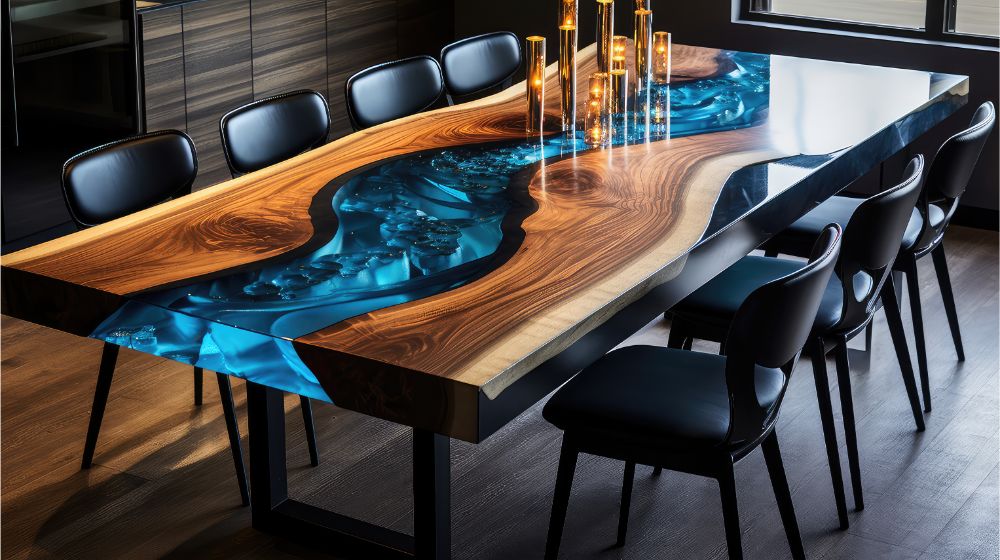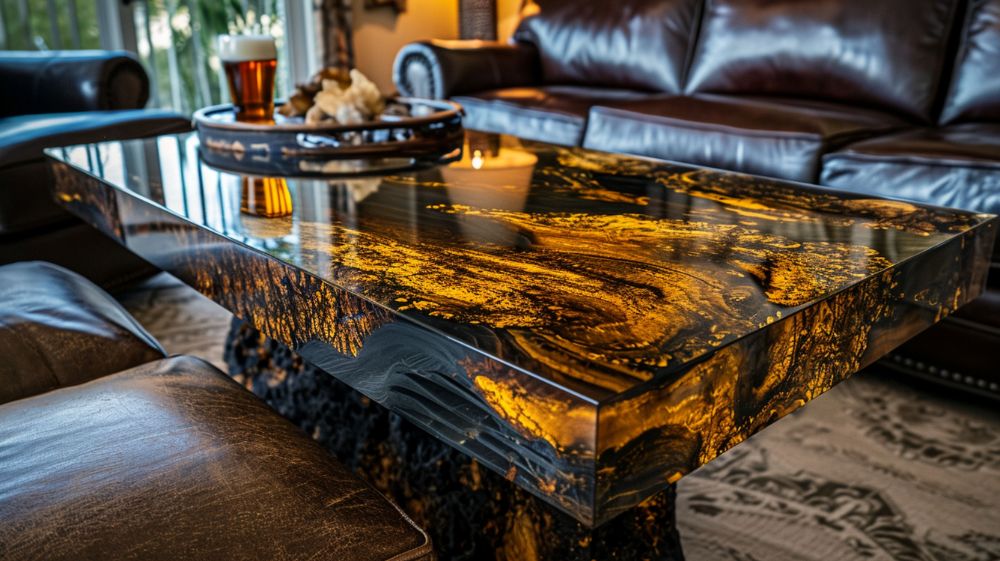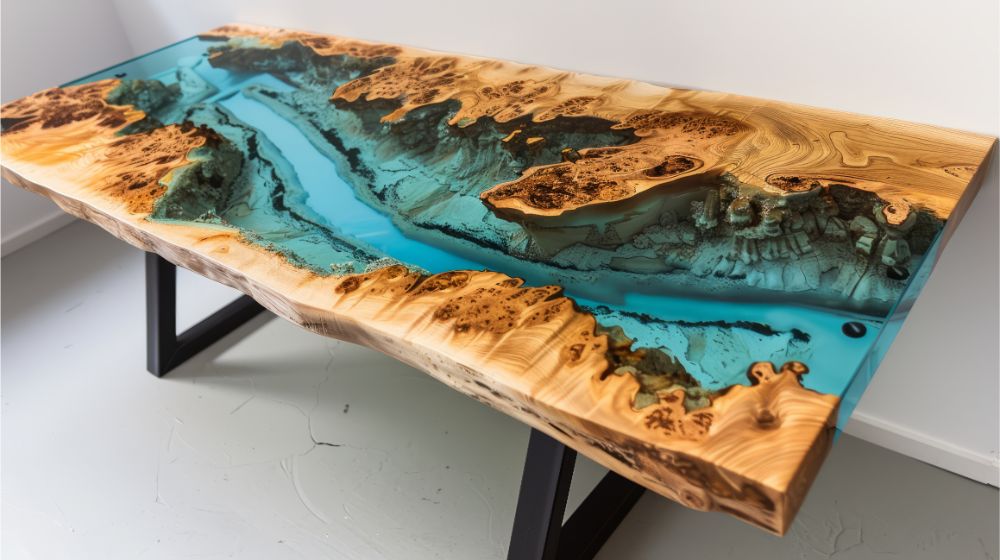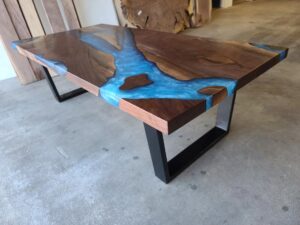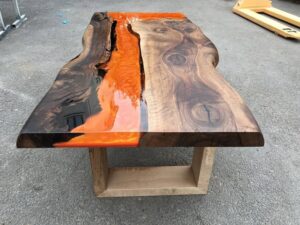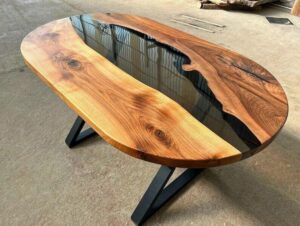Selecting the right resin table can be daunting with so many options available in size and shape. The perfect table should complement your space, align with your interior decor, and fulfill its intended function. Here’s a comprehensive guide to help you make the right choice. Before making your final decision, it’s important to be aware of the Top Mistakes to Avoid When Purchasing a Resin Table to ensure you choose the best fit for your home.
1. Understanding Your Space Requirements
Before you start browsing, it’s essential to understand your space requirements:
- Measure Your Room Dimensions: Use a tape measure to determine the length, width, and height of the room. Record these measurements to ensure the table fits comfortably without overcrowding the area.
- Consider Room Layout and Functionality: Identify the room’s primary function (e.g., dining, living, or outdoor space) to choose a table that complements its purpose.
- Think About Visual Balance: A well-sized table should balance the room without dominating it. For example, a small room benefits from a compact table, while a larger room can handle a bigger piece.
2. Choosing the Right Table Shape
Different table shapes offer unique advantages and can change the room’s dynamics:
- Rectangular Tables:
- Best for larger spaces and formal dining settings.
- Allows for more seating capacity and fits well in long, narrow rooms.
- Round and Oval Tables:
- Ideal for smaller spaces, creating a cozy and intimate atmosphere.
- Enhances room flow by eliminating sharp corners, making them safer in homes with children.
- Square Tables:
- Suitable for square or compact rooms.
- Provides a balanced look, especially when centered in the room.
- Irregular or Custom Shapes:
- Perfect for adding a unique touch to your decor.
- Great for unconventional spaces or if you want a table to serve as a statement piece.
3. Determining the Ideal Table Size
Selecting the right size is crucial for functionality and comfort:
- Standard Size Guidelines:
- For dining tables, consider the number of seats: a 4-seater typically requires 36-44 inches in width, while a 6-seater may need 60-72 inches.
- For coffee tables, ensure they are proportional to your sofa, generally about two-thirds the length of the sofa.
- Adjusting for Seating Capacity:
- Allow 24 inches of width per person for dining comfort.
- Factor in additional space for larger chairs or added leaves for extendable tables.
- Height and Legroom Considerations:
- Standard dining table height is around 30 inches, with about 12 inches of legroom needed for seated comfort.
- Consider adjustable-height options for multifunctional spaces or tables.
4. Seating and Traffic Flow Considerations
Creating a comfortable flow around the table is key to a functional space:
- Ensuring Adequate Clearance:
- Leave at least 36 inches of clearance from the table edge to the walls or other furniture for easy movement.
- For tighter spaces, consider foldable or extendable tables that can be adjusted when needed.
- Optimal Table Placement:
- Position the table centrally in the room to balance the space and make it a focal point.
- In open-plan areas, use rugs or lighting to define the dining space and guide traffic flow.
- Addressing High-Traffic Areas:
- In busy areas, opt for round or oval tables to facilitate smooth movement and avoid bumping into corners.
5. Functionality and Usage Factors
The table’s purpose plays a vital role in determining its size and shape:
- Table Purpose and Use Case:
- For dining, select a table that can comfortably seat the intended number of guests while leaving enough room for serving dishes.
- For a coffee or accent table, choose a shape and size that complements your seating arrangement and provides easy access for placing items.
- Multi-Purpose Options:
- Consider extendable tables for dining rooms or smaller spaces that may need to accommodate more people occasionally.
- Look for resin tables with storage options for added functionality in smaller rooms.
6. Design and Decor Compatibility
Aligning the table’s design with your existing decor enhances the room’s overall aesthetic:
- Matching the Table with Interior Style:
- For a modern or contemporary look, choose sleek, minimalist designs with clean lines, like rectangular or round tables.
- For rustic or traditional interiors, opt for tables with wood accents, live edges, or intricate resin inlays.
- Color and Finish Choices:
- Choose resin colors and finishes that complement or contrast your existing palette. For example, a clear resin with natural wood fits well in a neutral room, while a bold color may serve as an accent piece.
- Balancing Visual Weight:
- Ensure the table doesn’t overpower or get lost in the room. Use a larger table as a centerpiece in a spacious room or a smaller table to add subtle elegance in a compact area.
When considering how to best integrate a resin table into your decor, be sure to explore How to Match Resin Tables with Your Existing Decor to ensure a cohesive and harmonious look in your home.
7. Personal Preferences and Customization
Your personal style should guide your choice:
- Reflecting Personal Style:
- Select a table that aligns with your aesthetic preferences—whether that’s a minimalist, rustic, or eclectic look.
- Customization Options:
- Consider customizing your table with specific colors, embedded elements like stones or shells, or unique shapes to make it truly your own.
- Considering Long-Term Satisfaction:
- Think beyond current trends and select a table that you will enjoy for years to come.
Conclusion
Choosing the perfect size and shape for your resin table is a balance of space, style, and functionality. By understanding your space requirements, considering your room’s layout, and aligning the table with your decor and personal preferences, you can find a resin table that enhances both form and function in your home. Explore the diverse selection of customizable resin tables at Mayyari to find the one that fits your needs perfectly.
FAQ’s
The best shape depends on your space and style. Rectangular tables are great for larger rooms and formal settings, while round tables work well in smaller spaces for a more intimate feel.
Measure your room dimensions and ensure there is at least 36 inches of clearance around the table for easy movement.
Look for customization options like color, embedded elements, or unique shapes that reflect your personal taste and home aesthetic.
Size, shape, and functionality are key factors. Ensure it is proportionate to your seating arrangement and allows for easy access.

